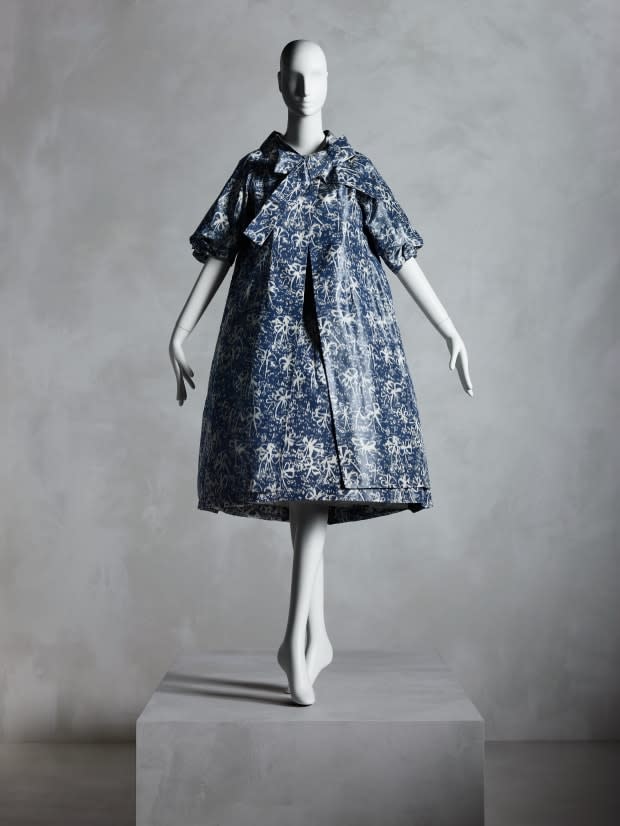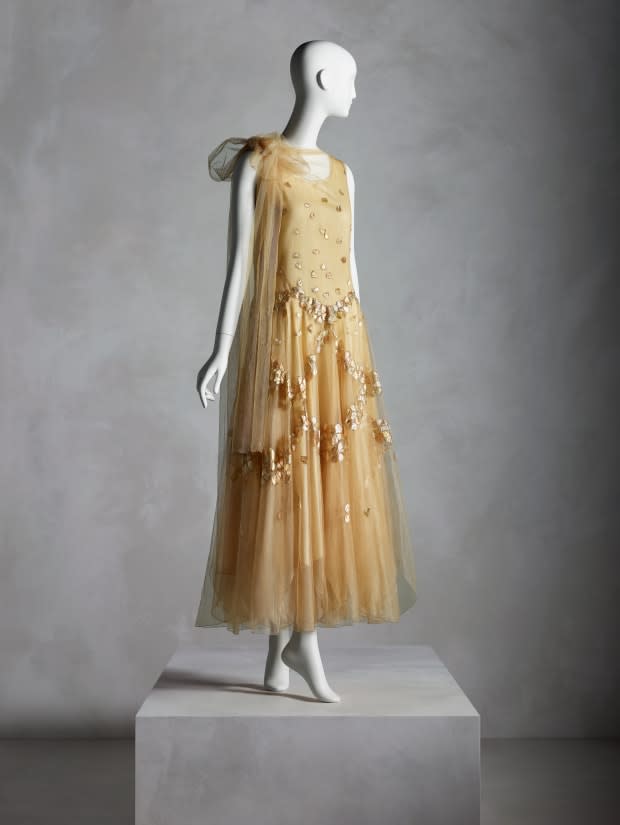The Met's Latest Fashion Exhibit Is One of Its Most Important — and Comes From a Woman No One's Heard Of
"In Pursuit of Fashion: The Sandy Schreier Collection" is pulled from one of the most valuable private fashion collections in the world.

The name Sandy Schreier is largely unknown outside a small circle of people within the fashion community. The average person might recognize names like Lagerfeld or Saint Laurent, but what they probably don't know is that it was Schreier who helped catalogue the works of those recognizable names for over more than half a century.
It's this lifetime of work collecting fashion's most precious and important garments that the Costume Institute at the Metropolitan Museum of Art in Manhattan is honoring in a new exhibit, titled "In Pursuit of Fashion: The Sandy Schreier Collection," on display from November 27 to May 17. And for good reason: The exhibit — 13 years in the making — is perfect for the current moment, one where a new decade is on the horizon and everyone is feeling at least a bit retrospective.
In contrast to modern fashion collectors like Anna Della Russo, who incidentally sold off a chunk of her fashion archive at auction last year, Schreier never wore the garments she collected; together, these garments comprise what is considered among the most valuable private fashion collections in the world. As such, the museum exhibit displays 80 articles of clothing that Schreier gifted the Met, pulled from Schreier's collection of more than 15,000 items, all dating to the early 20th century. These are pieces that helped define American and French fashion through various genres of dress, be it the Golden Age of Hollywood or post-war, narrative-heavy fashion.
Related Articles
FIT Museum's New Exhibit Explores the Back-And-Forth Between Minimalism and Maximalism
The Luxury Evolution of the Museum Gift Shop
The Chicago History Museum's New Exhibition Bills Costume Designers as the 'Original Influencers'
On one end of the exhibit, the Schreier collection highlights interwar fashion, chronicling what the museum calls "l'esprit nouveau" — that is, clothes that signaled the social and artistic upheaval of the era (think: the emergence of leisure and entertainment in common society) and includes a particularly special square-necked, embroidered black and gold dress by Paul Poiret from 1925. On the other end, Schreier's collection-on-display includes a 1993 Moschino riff on the famous Yves Saint Laurent Mondrian dress, an iconic piece that the Met considers part-parodied, part-affectionate fashion design, and certainly represents how creators within the industry have regarded the art form over the years.

"Sandy's own story is reflected in this exhibition, a story of her evolution as a collector and connoisseur, and it's a story that's deeply personal as it is deeply prophetic: a story of a pioneer, an individual who not only foresaw the modern practice of fashion collecting, but helped forge it," says Andrew Bolton, the Met's head curator, at the exhibition opening. "It's also the story of the rise of the fashion market, the creative and commercial value of fashion, and a story of the gradual appreciation and acceptance of fashion as an art form and its increasing relevance in an art museum."
Schreier, who grew up in suburban Detroit and whose father worked as a head furrier at the midwest branch of the New York-based Russeks department store, fell in love with the store's milliner and costume jewelry departments. Schreier, then a toddler, stumbled upon copies of Vogue and Harper's Bazaar in the dressing rooms at the store and would read them (as much as a toddler could read, she says) much to the amusement of the women shopping. It was these women, wives of wealthy automotive executives, who encouraged the now-octogenarian Schreier's early love of fashion, and eventually gifted her lightly-worn or unworn couture and ready-to-wear pieces, the catalyst to her work as a collector.
"I didn't even know what I was looking at, but I was swooning," Schreier says of the clothes she started to receive.
Since those early days, Schreier collected a venerable portfolio of the best — and in many cases most underrated — designer works of the century, including pieces by the original designers of luxury houses today like Cristóbal Balenciaga, Pierre Balmain and Christian Dior, alongside lesser known names like Maria Monaci Gallenga and Madeleine & Madeleine. There are pieces on display as old as a Mariano Fortuny y Madrazo tea gown from sometime between 1910 and 1915, to those as recent as the 2008 emotionally-tinged Alexander McQueen gown the designer crafted in honor of the late English magazine editor Isabella Blow. Without overstating its significance, the exhibit is as good as a Willy Wonka factory for fashion buffs.

Schreier's work as a collector is particularly encouraging at a moment when so much of fashion is treated as disposable, both figuratively — in favor of something newer and better for the insatiable Instagram machine — and literally, when millions of tons of clothes make their way to landfills annually. Schreier's gifts to the Met, those steeped in history and rich in their contribution to understanding the nuances of fashion's cultural evolution, as Met associate curator Jessica Regan describes, are just as important as the headline-grabbing shows like The Met's Notes on Camp in 2019 or the Heavenly Bodies exhibit the year before. (Indeed, Schreier lent pieces to both of these shows, not to mention nine others at the Met since 2003.)
Fittingly for an exhibit spanning a century, the exhibit opening attracted a cross-generational crowd, from designer Isaac Mizrahi (some of whose work Schreier has collected) to fashion YouTuber Luke Meagher. It seems the Met's latest exercise in documenting a lifetime of fashion education appeals to those of all ages.
